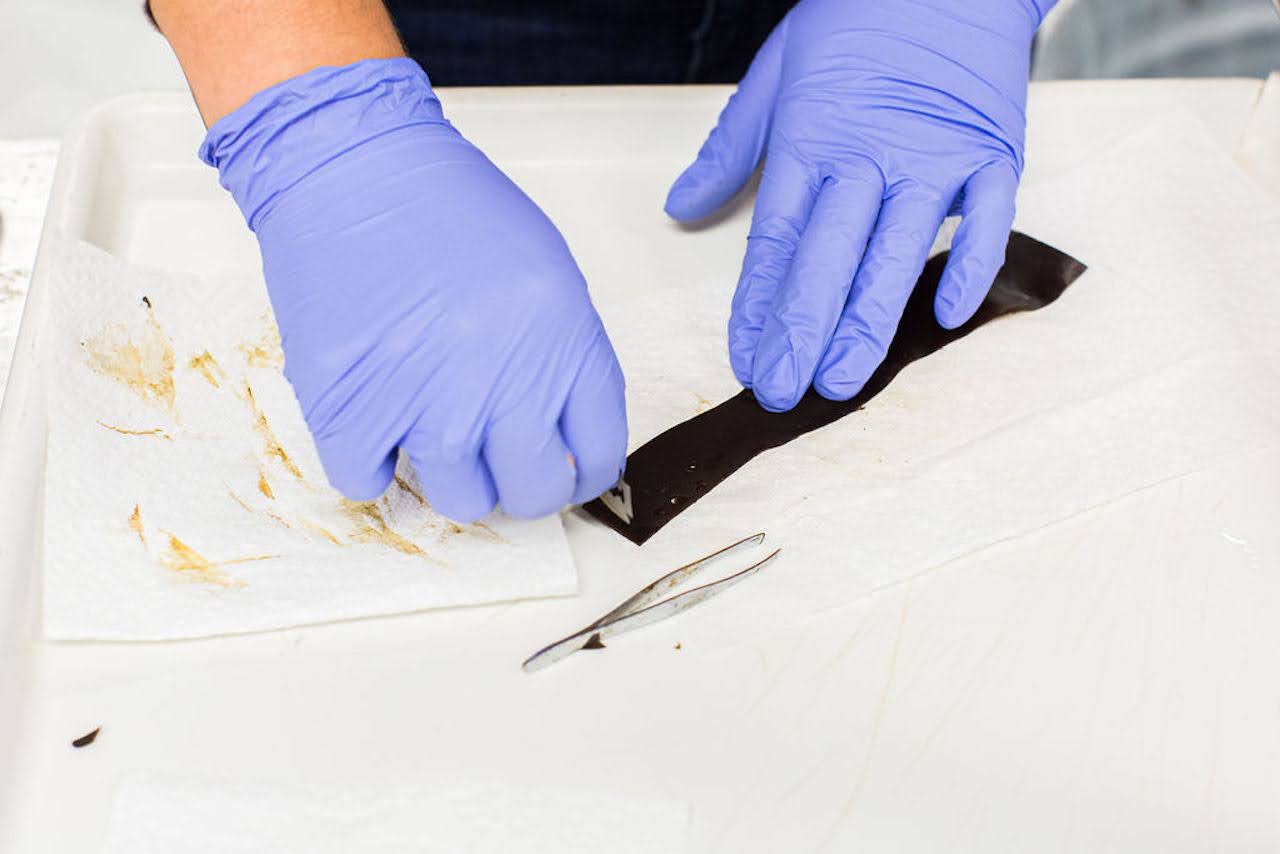This video shows the process of removing any biofouled or grazed area from the blade.
Back to: Seeding
Once you’re left with just the sorus tissue, the next step is to clean the surface of the blades by wiping it with a damp paper towel or sponge. The sorus tissue develops a layer of mucus while in the field; the goal of this step is to remove that slippery layer. Be firm enough to rid the tissue of its mucus coating, but not so harsh that you are shaving into the sporangia (reproductive tissue) and potentially damaging the spores. During this process, you should also take the time to remove any encrusting biofouling organisms and cut away any portion that is heavily grazed.
As you do this step, your sponge or paper towel will collect mucus, and you’ll need to periodically rinse or replace it. You’ll see some brown residue come off of the blade when you wipe it clean. If you are seeding with material from multiple locations, you should give all of your tools (razors, scissors, tweezers, etc.) a wipe down with ethanol before switching to the next batch of material.
Another strategy is to use a damp paper towel to gently wipe the sorus area. You want to avoid scrubbing too hard, but wipe with enough force to remove and fouling, and the protective filmy layer.
